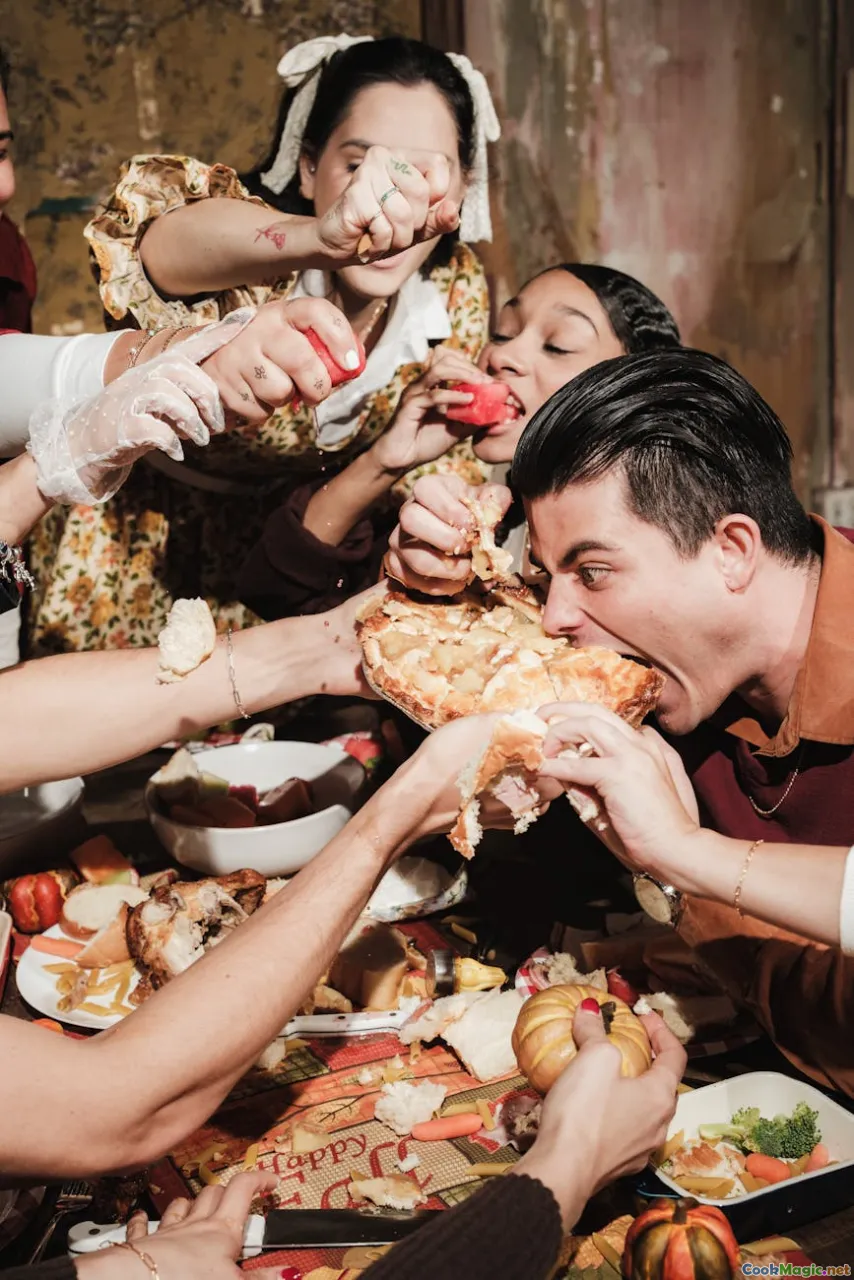Celebrating Holiday Foods in Haitian Households
8 min read Discover the vibrant, soulful world of Haitian holiday foods, rich in history, tradition, and flavor, that bring families together in celebration and cultural pride. May 21, 2025 21:00
Celebrating Holiday Foods in Haitian Households
Imagine a warm, bustling Haitian household as the sun sets, casting a golden glow over the lively streets of Port-au-Prince or Jacmel. The aroma of spices, fried plantains, and slow-cooked stews fills the air, inviting everyone into a world where food is more than sustenance—it's a heartfelt expression of identity, history, and community. In Haiti, the holiday season transforms ordinary kitchens into vibrant gatherings of family, tradition, and culinary artistry. This article takes you on an immersive journey into the rich tapestry of Haitian holiday foods, exploring their cultural roots, emotional significance, and the sensory experiences that make them unforgettable.
The Cultural Canvas of Haitian Holiday Foods
Haitian cuisine is a colorful mosaic crafted from centuries of history, resilience, and cultural exchange. During holidays—be they Christmas, Independence Day, or religious festivals—this mosaic is vividly displayed through special dishes that honor ancestors, celebrate faith, and bring loved ones together.
A Heritage of Flavors and Techniques
Haitian cooking is characterized by bold flavors—garlic, scotch bonnet peppers, aromatic herbs like thyme and bay leaves—and diverse techniques such as slow braising, frying, and grilling. These methods have been passed down through generations, often in family kitchens that serve as living museums of culinary tradition.
The Role of Food in Haitian Society
Food in Haiti functions as a social glue, reinforcing bonds and cultural identity. During holidays, the act of preparing and sharing meals transcends mere nourishment; it becomes a sacred ritual, a collective act that preserves history and nurtures community spirit.
Iconic Holiday Dishes and Their Stories
1. **Griot (Marinated Fried Pork)**Few dishes symbolize Haitian festive gatherings like Griot. Marinated in citrus juice, garlic, and spices, the pork shoulder is slow-cooked until tender, then fried to a crispy, golden perfection. The crackling skin, infused with the tang of lime and the heat of Scotch bonnet peppers, offers a sensory explosion—crispy, juicy, spicy.Personal Reflection: I remember my grandmother’s griot during Christmas—its aroma alone would fill the entire neighborhood. Breaking into the crispy skin, the juicy pork inside, and dipping it in pikliz (spicy pickled vegetables) created a symphony of flavors that felt like a warm embrace.
2. Pikliz (Spicy Pickled Vegetables)
No Haitian holiday table is complete without pikliz. This fiery, tangy relish made from cabbage, carrots, peppers, and onions, pickled in vinegar and lime juice, provides a refreshing counterpoint to rich dishes like griot. Its vibrant reds and greens add visual excitement.
3. Diri ak Djon Djon (Black Mushroom Rice)
A festive centerpiece, this rice dish uses djon djon mushrooms—rare, black, earthy fungi that lend a deep umami flavor and striking black hue. Cooked with coconut milk, garlic, and herbs, it’s a luxurious treat reserved for special occasions.
4. Lambi (Conch Stew)
Seafood lovers indulge in Lambi—a tender conch stew simmered with tomatoes, peppers, and spices. Its tender texture and rich, savory broth evoke the ocean's bounty, celebrating Haiti’s maritime heritage.
5. Pain Patate (Sweet Potato Bread)
A sweet, dense bread flavored with cinnamon, nutmeg, and vanilla, Pain Patate is a comforting dessert that often appears during Christmas. Its moist crumb and fragrant aroma evoke nostalgia and warmth.
Rituals, Traditions, and the Emotional Heart of the Feast
Family Gatherings and Community Bonds
Holidays in Haiti are marked by communal feasts. Families gather in kitchens, often working together—marinating, chopping, frying—to prepare these dishes. The act of cooking becomes a collective ritual, passing down stories and techniques from elders to younger generations.
Symbolic Significance
Certain dishes carry symbolic meaning. For example, Griot represents resilience and celebration, while Diri ak Djon Djon signifies prosperity and richness. Sharing these foods during festivities affirms cultural pride.
Music, Dance, and Food
No Haitian celebration is complete without music—compas, rara, or vodou rhythms. The energy of dance and song complements the festive food, creating an immersive cultural experience that stimulates all senses.
Personal Insights and Reflections
Growing up in a Haitian household, holiday meals were more than just a culinary experience—they were a testament to our history, struggles, and triumphs. Each dish told a story. The slow simmering of Lambi reminded me of the ocean’s calming power; the fiery pikliz reflected our fiery spirit.
Cooking these dishes with my family was a time of bonding, storytelling, and passing down traditions. As I learned to season the griot or stir the diri ak djon djon, I felt connected to ancestors who survived hardships and kept their culture alive through food.
Modern Twists and Culinary Innovation
Today, Haitian chefs and home cooks alike are experimenting with traditional recipes, infusing new ingredients or presentation styles while respecting the roots. These innovations keep the cuisine vibrant and relevant, attracting new generations and international audiences.
Conclusion: A Feast of Heritage and Heart
The celebration of holiday foods in Haitian households is a vivid tapestry woven with history, culture, and love. It’s about more than taste; it’s about honoring ancestors, strengthening bonds, and expressing resilience through flavor.
The next time you savor a crispy griot, a spoonful of Diri ak Djon Djon, or a spicy dollop of pikliz, remember—you're tasting a piece of Haiti’s soul. These dishes are not merely festive—they are a testament to a vibrant, enduring culture that continues to thrive in the hearts and kitchens of its people.
Let Haitian holiday foods inspire you to celebrate your own traditions, to cook with passion, and to cherish the moments shared around a table filled with love, history, and flavor.









